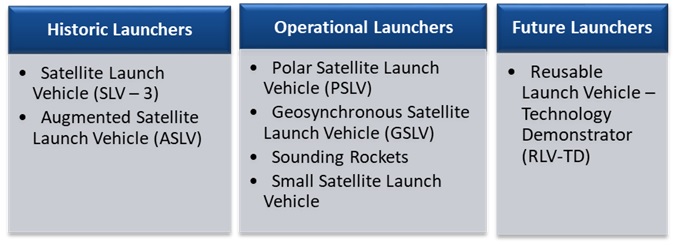Chandrayaan 3’s successful landing in Moon makes India the first country to reach close to lunar South Pole of the Moon, thus sparking the history of ISRO’s space voyage.
To know about Chandrayaan 3, click here
Dr.Vikram Sarabhai is known as father of Indian space programme.
|
Specification |
Location |
|
Headquarters of ISRO |
Bengaluru, Karnataka |
|
Launch Vehicles |
Vikram Sarabhai Space Centre (VSSC), Thiruvananthapuram |
|
Satellites |
U R Rao Satellite Centre (URSC), Bengaluru |
|
Integration and launching of satellites and launch vehicles |
Satish Dhawan Space Centre (SDSC), Sriharikota |
|
Development of liquid stages including cryogenic stage |
Liquid Propulsion Systems Centre at Valiamala and Bengaluru |
|
Sensors for Communication and Remote Sensing satellites |
Space Applications Centre (SAC), Ahmedabad |
|
Remote Sensing satellite data reception processing and dissemination |
National Remote Sensing Centre (NRSC), Hyderabad |
|
Satellite Type |
Applications |
Examples |
|
Communication Satellites |
Provide services to telecommunications, television broadcasting, satellite newsgathering, societal applications, weather forecasting, disaster warning and Search and Rescue operations. |
The Indian National Satellite (INSAT) series GSAT series, KALPANA-1 |
|
Earth Observation Satellites |
Agriculture, water resources, urban planning, rural development, mineral prospecting, environment, forestry, ocean resources and disaster management. |
Indian Remote Sensing (IRS) series, RESOURCESAT-1, 2, 2A, CARTOSAT-1, 2, 2A, 2B, RISAT-1 and 2, OCEANSAT-2, |
|
Navigation Satellites |
Used to meet the emerging demand of positioning, navigation and timing and also civil aviation requirements. |
GAGAN and IRNSS (NAVIC) |

What about the planetary explorations of ISRO?
ISRO was the 4th agency to reach the Mars orbit after Russia’s Roscosmos, NASA, and ESA.
India becomes 1st country to land on Moon's South Pole and 4th country (after Russia, the U.S. and China) to land on the Moon.
To know more about the role of moon in the development of life on earth click here
To know more about the upcoming missions of ISRO click here
References